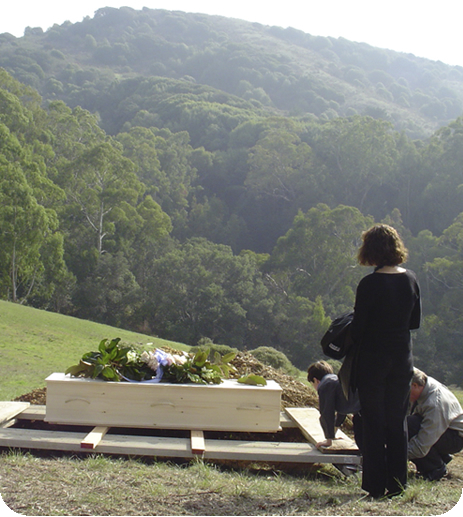 I didn’t really know Jaime Barajas, brother of environmental transformer/activist Babak Tondre. I met him briefly when Nik Bertulis and I visited Babak’s home in 2003 to view his back-yard micro-eden, with its chickens, gardens, and fruit trees. (Photos from that day are in my two later books.) Jaime, who was living in an art-filled loft over a utility shed, seemed to me a shy, lighter version of Babak. Babak worried a bit about his brother; after all, he was a Pisces.
I didn’t really know Jaime Barajas, brother of environmental transformer/activist Babak Tondre. I met him briefly when Nik Bertulis and I visited Babak’s home in 2003 to view his back-yard micro-eden, with its chickens, gardens, and fruit trees. (Photos from that day are in my two later books.) Jaime, who was living in an art-filled loft over a utility shed, seemed to me a shy, lighter version of Babak. Babak worried a bit about his brother; after all, he was a Pisces.
Last week, just 10 days after spending an afternoon with Babak and his daughter visiting an eco-wastewater system and musing about the “public lore vs. reality” of the eco-activist scene in the Bay area, Babak told me by email his brother was hit by a car and killed in San Jose. Here is his obituary. On Sunday, he buried his brother in this Marin County cemetery providing “natural burial” options: Forever Fernwood.
Fernwood, according to its Web site, “uses no toxic embalming fluids, no vault, and only a biodegradable casket or a burial shroud. Natural rocks, wildflowers, shrubs, and trees serve as markers, and each grave is locatable via Global Positioning System (GPS) coordinates.” A caring treatment that reflected what I imagine Jaime valued.
Many “green burials” forego the metal caskets and concrete casings common to conventional U.S. burial and instead employ cremation (burning–and remember it takes a lot of fuel to burn off the gallons of water a human body comprises) and sometimes drying via dry ice (a relatively new approach detailed in Mary Roach’s book, Stiff). All of this is to avoid groundwater contamination by pathogens and nutrients in a body. One can also compost a body, a faster decomposition process, but this process hasn’t been offered for humans in any formal way yet.
David Del Porto, my coauthor, has long beseeched his wife, sons, and friends to take his body post-mortem and bury it on a high hill (far from ground or surface water), in a shallow grave next to an oak tree. He wants his embodied nutrients to feed an oak tree.
My mother’s ashes are in a container in a cabinet in the kitchen. This really feels just right to me and apparently my father, so there is no rush to do anything else with them, although taking them to Strawberry Banke’s gardens has been discussed.
I’ve often wondered if fast composting could take place in a contained way, so that our bodies’ nutrients could directly nourish trees more immediately. I have some ideas about this I’ll detail later.
I first heard of these options when I was 17 and watching a documentary about the folk music group, The Weavers, which my mother liked. Pete Seeger was a member. The group’s founder Lee Weaver wrote a song about where he would like his body to go after his death. Indeed, he was cremated and added to the compost pile:
In Dead Earnest
If I should die before I wake
All my bone and sinew take
Put them in the compost pile
To decompose a little while
Sun, rain and worms will have their way
Reducing me to common clay
All that I am will feed the trees
And little fishes in the seas
When corn and radishes you munch
You may be having me for lunch
Then excrete me with a grin
Chortling, There goes Lee again
‘Twill be my happiest destiny
To die and live eternally
Lee Hays, 1981
